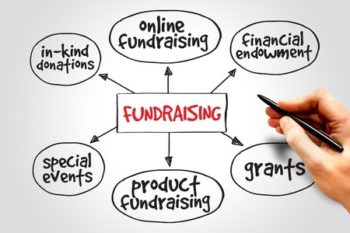The Role of Neighborhood Interaction in Nonprofit Fundraising: Building Lasting Relationships for Lasting Support
Area engagement is progressively acknowledged as a vital component of effective not-for-profit fundraising. The methods and methods utilized to involve neighborhoods differ commonly, elevating important inquiries concerning efficiency and effect.
Understanding Community Interaction
Community interaction is a vital element of successful not-for-profit fundraising efforts. Nonprofits should determine essential stakeholders-- such as neighborhood members, neighborhood services, and other organizations-- to develop reliable involvement strategies.
Efficient community engagement is based on active listening and responsiveness to the needs and passions of the area. This procedure involves getting feedback, understanding neighborhood dynamics, and making certain that the company's goal lines up with neighborhood priorities. Involving the area can take different kinds, consisting of public conferences, volunteer chances, and collaboration initiatives, each made to motivate involvement and investment in the company's goals.
Moreover, area interaction need to be approached as an ongoing dialogue instead of an one-time initiative. By fostering an inclusive environment where neighborhood voices are heard and valued, nonprofits can construct a solid foundation for future fundraising endeavors. Inevitably, a deep understanding of neighborhood engagement encourages companies to produce authentic links that improve their overall performance and sustainability.
Benefits of Solid Relationships
Solid relationships developed with neighborhood involvement yield many advantages for not-for-profit fundraising efforts. First and leading, these relationships foster trust fund and reputation, vital elements in motivating contributors to add. When prospective advocates see a nonprofit proactively associated with their community, they are more probable to count on its mission and influence.

Furthermore, these relationships help with efficient interaction. Nonprofits can take advantage of their links to share tales of influence, updates, and needs, guaranteeing that advocates stay informed and engaged. This open line of interaction not only enhances bonds yet also encourages word-of-mouth promo, expanding the not-for-profit's reach.
Last but not least, solid area connections can bring in brand-new companions and enrollers. People and companies are a lot more likely to align with companies that show meaningful area participation, providing extra resources and support that can substantially improve fundraising capabilities. Thus, cultivating robust partnerships through neighborhood engagement is integral to a not-for-profit's long-term fundraising success.
Strategies for Effective Involvement
Just how can nonprofits properly involve their communities to enhance fundraising initiatives? Routine updates, engaging content, and calls-to-action can galvanize area rate of interest and participation.
Second, organizing neighborhood events, such as workshops, volunteer opportunities, or fundraising drives, facilitates face-to-face communication, allowing nonprofits to display their impact and efforts. These events not just increase funds yet additionally grow relationships and permit neighborhood members to involve directly with the reason.
Third, carrying out individualized communication approaches can improve engagement. Customizing messages to certain donor sectors based on passions and past payments promotes a feeling of belonging and investment in the company's goal.
Finally, creating partnerships with neighborhood companies and neighborhood leaders can enhance outreach initiatives. Collaborative efforts can boost visibility and integrity, demonstrating a collective dedication to the community's well-being. By integrating these approaches, nonprofits can build long lasting relationships that enhance fundraising initiatives and drive lasting support.
Determining Engagement Success
While involving the community is vital for effective nonprofit fundraising, measuring the performance of these involvement efforts is equally essential. Developing clear metrics allows organizations to evaluate exactly how well they are getting in touch with their target market and attaining their fundraising goals. Key performance signs (KPIs) such as benefactor retention prices, volunteer participation levels, and engagement on social media systems give substantial information for evaluation.

Regularly assessing these metrics makes it possible for organizations to pivot their strategies when required, ensuring that neighborhood engagement continues to be lined up with their overall goal. Additionally, sharing these outcomes with stakeholders fosters openness and builds trust fund, encouraging more community participation. Ultimately, a durable dimension framework not just notifies future fundraising campaigns yet also enhances the connection in between the nonprofit and its advocates, preparing for sustainable success.
Study in Area Influence
Various instance studies highlight the profound impact that neighborhood involvement can have on nonprofit fundraising success. One remarkable instance is the "Food for Idea" initiative, where a neighborhood food bank partnered with businesses and schools to host area dinners. These events not only increased funds however additionally fostered a sense of belonging among participants, substantially increasing donor retention rates.
One more compelling case is the "Environment-friendly Spaces Task," which entailed neighborhood blog here residents in the revitalization of city parks. This initiative not only garnered financial support from local services however likewise grew a volunteer base that added to continuous upkeep and shows. The feeling of possession and satisfaction among community members translated into sustained payments.
In the realm of arts, the "Art for All" campaign successfully involved regional artists and patrons to develop joint art installments, resulting in enhanced exposure and donations for a local arts not-for-profit.
These instances highlight that when nonprofits focus on neighborhood involvement, they can create lasting partnerships that enhance fundraising efforts, ensuring lasting assistance and fostering a lively area culture. Such cases show that neighborhood involvement is not just an approach however a necessary pillar of nonprofit success.
Final Thought
Finally, neighborhood engagement is integral to the success of not-for-profit fundraising initiatives. By fostering solid connections with local stakeholders, organizations boost count on and trustworthiness, resulting in boosted benefactor retention and loyalty. Applying efficient involvement techniques and measuring their effect guarantees that nonprofits can adjust and thrive. Inevitably, a robust structure of community support not just magnifies fundraising potential however additionally cultivates a society of collaboration, crucial for accomplishing lasting organizational goals and maintaining meaningful effect.
Nonprofits should determine crucial stakeholders-- such as area members, local organizations, and other organizations-- to create effective engagement approaches.
In verdict, neighborhood engagement is indispensable to the success of not-for-profit fundraising efforts.